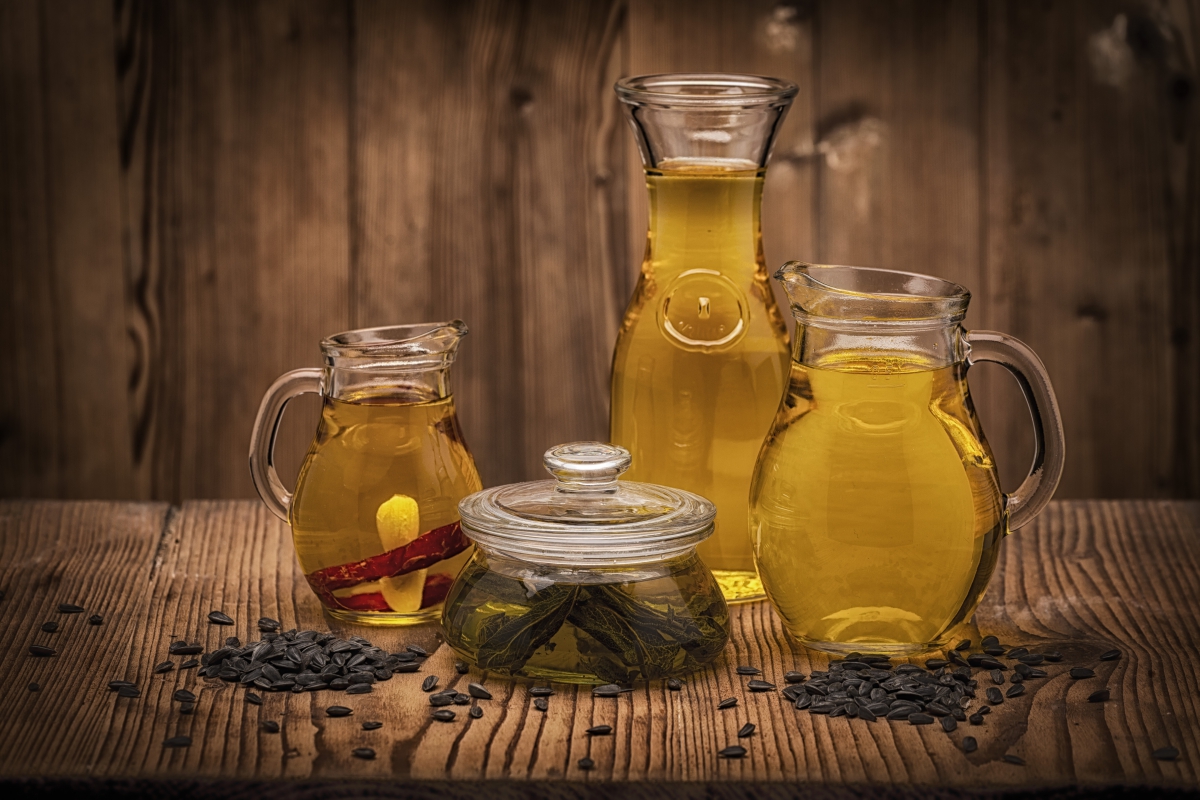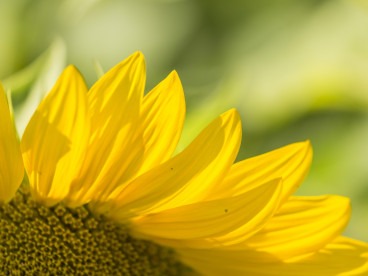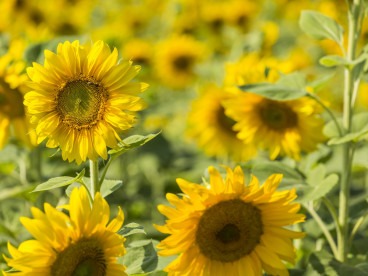As a child I always admired the sunflower, the splendid sea of yellow flowers, which virtually light up the fields of Csallóköz. I always thought that this is Fairy Ilona letting down her hair, which spreads over the land.
I was not alone. György Nagy and Pál Bíró thought the same, but they stepped onto the field of deeds. They had faith that the sunflower – which is a symbol of Csallóköz – has a physiologically miraculous effect. The oil pressed from it has health benefits for the people of Csallóköz, as it was planted here, our little sun raised it and it was harvested here.
When a long time ago György Nagy and his family (in distant 1998) launched their BIO-DAIRY in Búslak, they knew that they had to give their cows proper feed. “Milk cows need a lot of protein. Since soy beans were 48% protein, we thought of soy and we bought a bio-soy press from abroad. Then we discovered that the soy was genetically engineered. There is no milk without protein. We had the idea of growing sunflowers and we would press a sunflower plug. Or rather it’s official name – pogácsa,” György Nagy, the manager of the Búslak oil plant. He adds that at that time they thought of the sunflower oil solely as a by-product. That is why at first they sold it to a dog food factory.
“Then at an international bio-exhibition a processor asked us, if we had a bio-presser, then we must have organic oil,” continues György Nagy. “We said, well, of course. Then the gentleman told us that sunflower oil was very precious and asked how much we paid for a ton of organic sunflower oil. By then I realised that organic milk was just a way station in the life of our company and the big station was coming,” said György Nagy, smiling.
Actually, that was when Búslak oil became the flag ship of the Dunatőkés farm. They began to send sunflower oil abroad and they began to realise that they had launched an incredibly high-quality product, which had a real sunflower taste and aroma. A few years later the third station arrived, by then they could remove without chemicals the strong smell of the oil, which is not to everyone’s taste.
What makes an organic oil organic? The answer is simple. First of all, the sunflower must be grown in a natural environment free of chemicals. It is not enough to be called “organic”. It has to be proved in laboratory analysis. In addition, the sunflower must not encounter any harmful substances during the entire phases of its processing. Organic farming involves the use of technologies that are free of chemicals and artificial manure.
The oil of Tőkés is cold pressed, which means that before pressing, the sunflower is not warmed up. Before it is pressed, however, it is cleaned and sifted several times, so that it is free of contaminants. Then the sunflower is pressed, the seed bursts and the oil trickles out sideways – which is raw of course – and the drops. The oil then goes through three cleansing processes, then it ends up an incredibly pure virgin organic oil. And what makes this golden oil so superb? According to György Nagy, “the advantage of the oil we produce is that it can stand very high temperatures. We call it the 200 °C oil of Tőkés, although it can stand even 230 °C. There is no oil to compare with it. It contains an enormous quantity of vitamin-E and polyunsaturated fat, which are very healthful, as they have an anti-oxidant and cell-protective effect. And we should not forget that not only is it delicious and healthful, but it can make miracles in skin care.
What I thought long ago was Fairy Ilona’s hair, now makes organic pogácsa and organic oil. The cows get the pogácsa or plugs as tasty feed and they gratefully give us organic milk. So let us resume: we have pogácsa (cake), oil and milk, but this is not the end of the series. Afterwards, the cow manure is spread on the land, whereon quality golden sunflower grows. And everything starts all over. Is it not wonderful? The whole thing is a great circle. And how can all this be boosted? Yes. That this superb golden oil is from Csallóköz, that is, it is ours. This is beautiful in Kukkónia.







